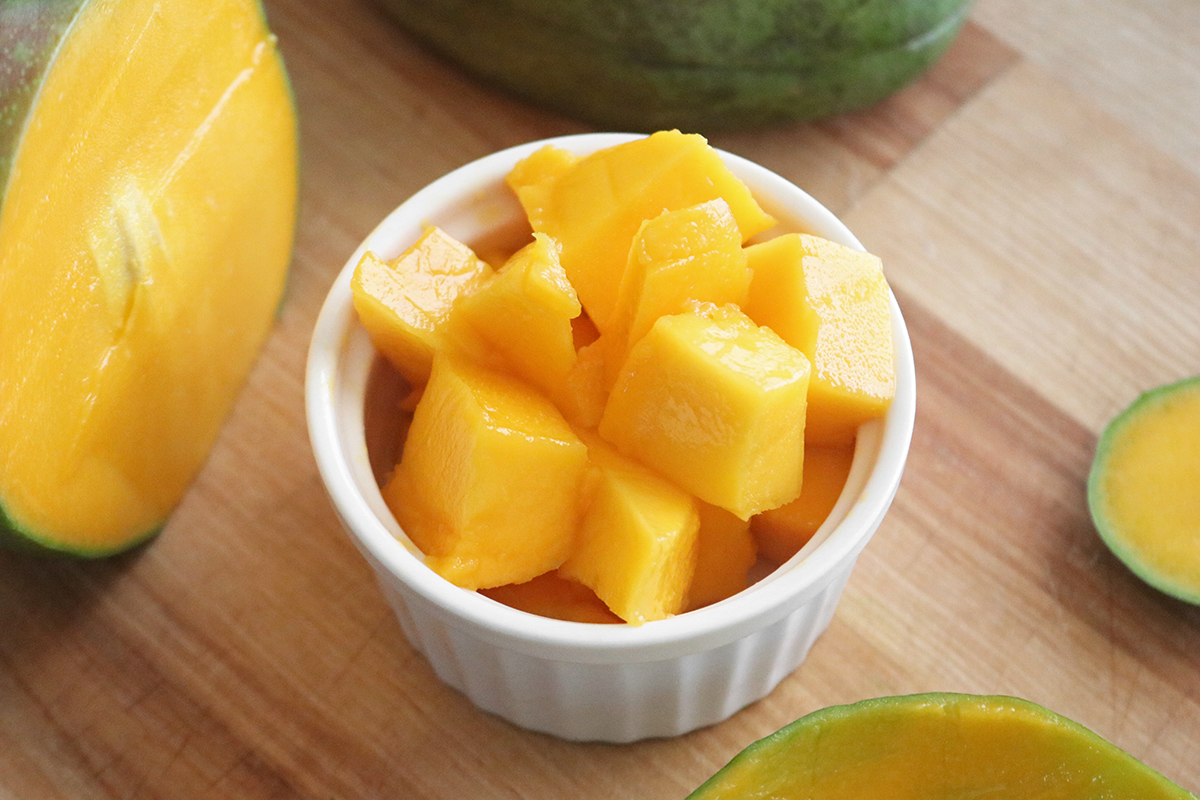

Mango season has arrived! I’m honoring it with a guide on how to prepare mango, whether you prefer it sliced or diced. Mango ranks among the world’s beloved fruits, though I didn’t eat it during my childhood and had to learn its preparation. I’ve experimented with various techniques, and today I’m sharing the best way to cut a mango.
Mango has a taste reminiscent of a juicy tropical peach, featuring hints of honey. Even when perfectly ripe, it often possesses a slight tanginess, compelling me to indulge again. I enjoy incorporating mango for a touch of sweetness in salads, salsas, and savory dishes—not to mention munching on them.
Mangoes reach their prime in the summer months, usually from May to September. I’ve been thrilled to discover Ataulfo mangoes (also referred to as honey or Champagne) on sale at Whole Foods recently. That’s the variety illustrated here, known for being particularly creamy and tasty. My preparation techniques apply to any variety or size of mango!
Mango Preparation Tips
How to Determine if a Mango is Ripe
Seek out mangoes that give slightly under gentle pressure, akin to a ripe avocado or peach. It should display a bright hue, which varies based on the type, and emit a sweet aroma at the stem end.
Underripe mangoes will feel quite firm. Steer clear of overripe ones that have wrinkled skin or brown spots—they may be overly sweet but tend to have a more stringy and mushy texture inside.
Watch How to Prepare Mango
You’ll find written directions in the recipe at the end of the post. For visuals, take a look at this short video:
Note on Mango Skin
If you’re asking, “Can I just eat the skin of a mango?” the answer is technically yes, but you may prefer not to. The skin contains fiber and nutrients, but I’ve been told it’s not particularly palatable.
Mango skin can cause irritation to human skin due to its urushiol content, the same compound found in poison ivy that can lead to contact dermatitis. As someone with sensitive skin, I take care not to ingest mango directly from the skin.
How to Serve Fresh Mango
Ripe mango makes for a tasty snack by itself. I enjoy it with a dash of chili-lime seasoning like Tajín, which provides a salty-spicy contrast to the sweetness.
You can freeze diced mango for smoothies or simply to save extra. To stop the pieces from clumping together, arrange the mango on a parchment paper-lined tray, freeze until solid, then move it to a freezer bag.
Mango pairs particularly well with ingredients such as black beans, berries, chili peppers, cilantro, coconut, ginger, lime, mint, red onion, peanuts, pineapple, and yogurt. Many of these ingredients feature in the recipes below.
Recipes with Fresh Mango
Here are several recipes highlighting mango on Cookie and Kate. You’ll notice that I love blending sweet mango with savory and spicy flavors for equilibrium:
Please share your experience with this method in the comments. I enjoy receiving your feedback.
How to Cut a Mango
Discover how to slice or dice a mango! It’s simple once you’re familiar with this technique. Prepare as many mangoes as necessary, and consult the recipe notes for freezing guidance.
Instructions:
1. With one hand, position the mango upright with the stem on top. Utilize a sharp chef’s knife to remove one broad side of the mango, about ½-inch from the center (if you encounter something hard or hear a scratching noise, you’re too close to the pit and need to cut further from the center). Next, cut off the other side similarly.
2. Taking one piece at a time, gently run your knife through the flesh (don’t apply too much pressure or you’ll cut the skin). For sliced mango, make long, narrow vertical cuts. For diced mango, create wider vertical cuts followed by horizontal cuts to form a grid pattern. You can likely slice more flesh from each side of the pit and score it as well.
3. Employ a large spoon to remove the flesh from the skin, then use your slices or cubes as desired. If your mango was sizeable, you might manage to carve out a bit more flesh around the pit, though these pieces won’t be uniform like the others—they’re great for snacking!
Notes:
To freeze leftover mango: Place the mango on a parchment paper-lined tray that fits into your freezer. Freeze until the mango is solid, then transfer it to a freezer bag.